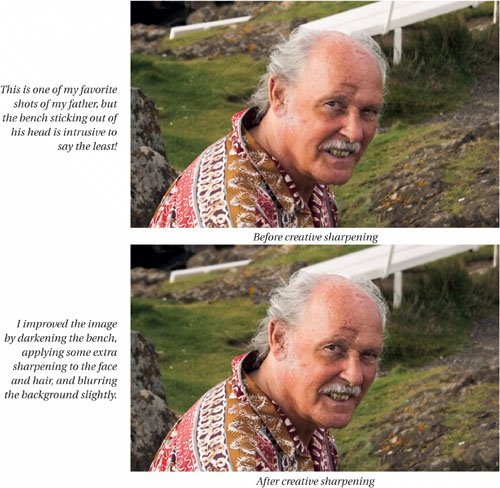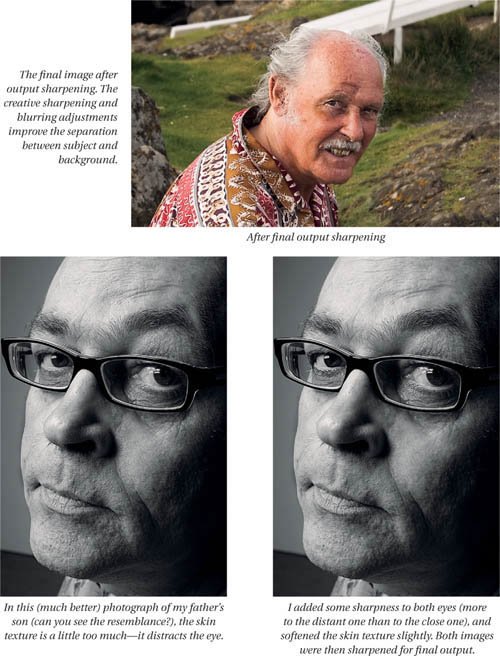Creative Sharpening
| Creative sharpening isn't required for every image (if you're shooting 500 plumbing widgets on white seamless backgrounds, creative sharpening probably isn't in the budget), but on some images, subtle sharpening (or blurring) moves can make a big difference. For example, on head shots I often add a little extra sharpness to the eyes and hair. Sometimes skin texture needs a little softening. And of course, while one way to make a subject stand out from its surroundings is to sharpen it, it's sometimes more effective to blur the surroundings (which makes the subject appear sharper without actually sharpening it). Figure 3-8 shows some examples of creative sharpening and blurring. They represent subjective decisions made on my part with which you may well disagree, but they serve to illustrate the point that localized control of detail can be a creative tool. Figure 3-8. Creative sharpening
There are few rules for creative sharpening beyond those dictated by taste: You have to learn the behavior of your display so that you can make reasonable judgments as to how far to push the sharpening, and there's no shortcut for doing that. As with all the previous steps in the sharpening workflow, it's a good idea to leave headroom for the final output sharpening by protecting the extreme highlights and shadows, and to do your creative sharpening on the native-resolution image. I'll discuss specific techniques for creative sharpening in Chapter 4, Sharpening Tools and Techniques. |
EAN: 2147483647
Pages: 71

